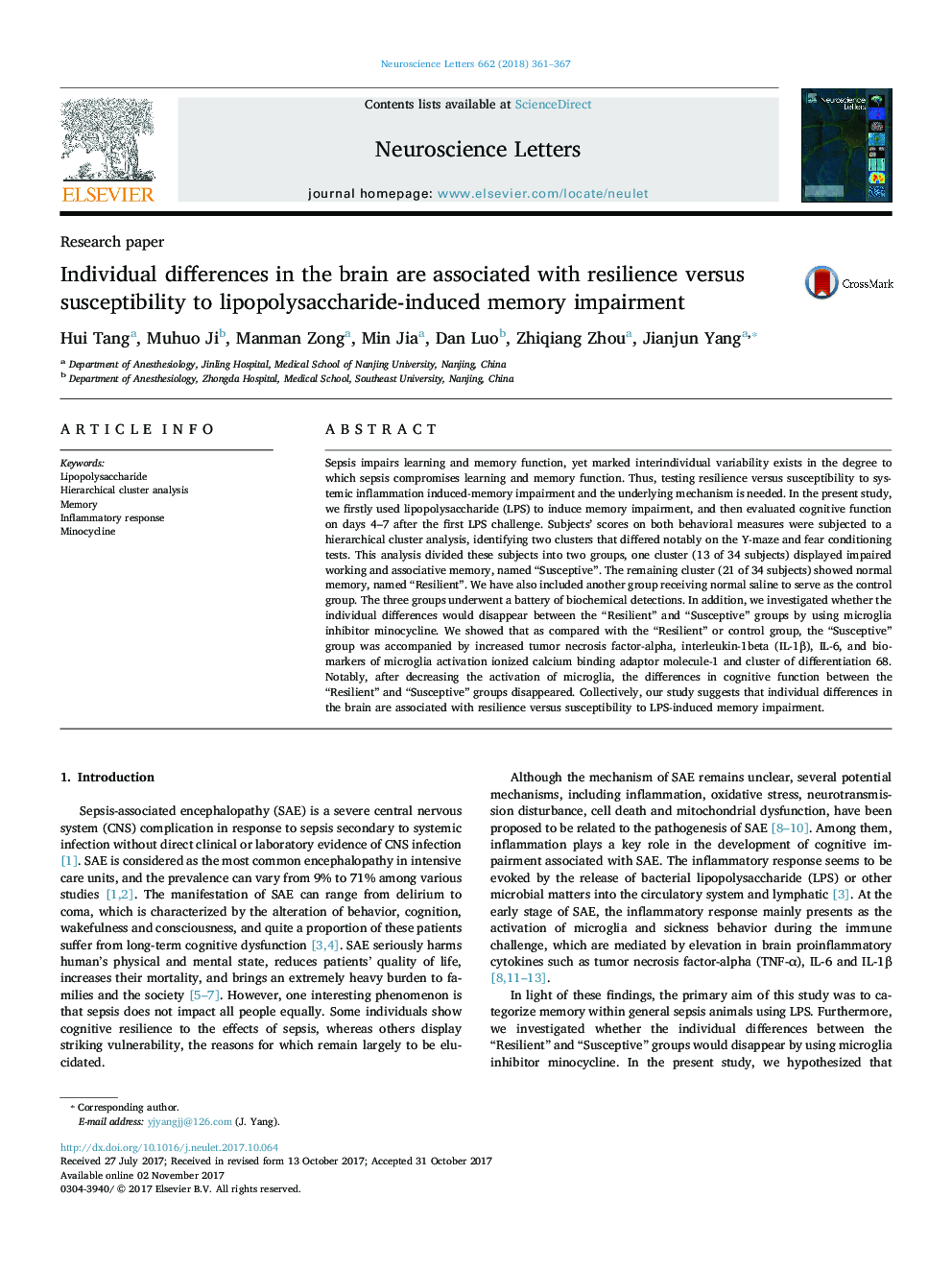| Article ID | Journal | Published Year | Pages | File Type |
|---|---|---|---|---|
| 8842012 | Neuroscience Letters | 2018 | 7 Pages |
Abstract
Sepsis impairs learning and memory function, yet marked interindividual variability exists in the degree to which sepsis compromises learning and memory function. Thus, testing resilience versus susceptibility to systemic inflammation induced-memory impairment and the underlying mechanism is needed. In the present study, we firstly used lipopolysaccharide (LPS) to induce memory impairment, and then evaluated cognitive function on days 4-7 after the first LPS challenge. Subjects' scores on both behavioral measures were subjected to a hierarchical cluster analysis, identifying two clusters that differed notably on the Y-maze and fear conditioning tests. This analysis divided these subjects into two groups, one cluster (13 of 34 subjects) displayed impaired working and associative memory, named “Susceptive”. The remaining cluster (21 of 34 subjects) showed normal memory, named “Resilient”. We have also included another group receiving normal saline to serve as the control group. The three groups underwent a battery of biochemical detections. In addition, we investigated whether the individual differences would disappear between the “Resilient” and “Susceptive” groups by using microglia inhibitor minocycline. We showed that as compared with the “Resilient” or control group, the “Susceptive” group was accompanied by increased tumor necrosis factor-alpha, interleukin-1beta (IL-1β), IL-6, and biomarkers of microglia activation ionized calcium binding adaptor molecule-1 and cluster of differentiation 68. Notably, after decreasing the activation of microglia, the differences in cognitive function between the “Resilient” and “Susceptive” groups disappeared. Collectively, our study suggests that individual differences in the brain are associated with resilience versus susceptibility to LPS-induced memory impairment.
Related Topics
Life Sciences
Neuroscience
Neuroscience (General)
Authors
Hui Tang, Muhuo Ji, Manman Zong, Min Jia, Dan Luo, Zhiqiang Zhou, Jianjun Yang,
